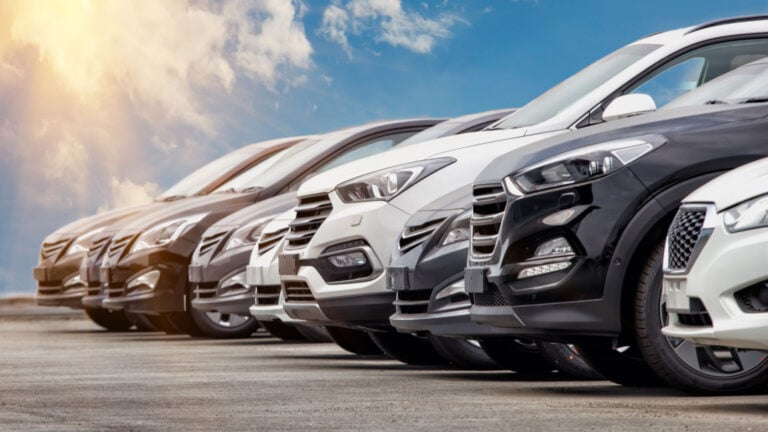With various media outlets reporting that soaring prices in the housing sector has recently led to a slowdown in sales, analysts have now turned their attention to the used car market. One of the remarkable hallmarks of the post-pandemic paradigm, a combination of factors – including stimulus checks and supply chain disruptions – pushed consumers toward secondhand vehicle dealerships. However, shifting tides present significant ambiguities about what lies ahead.
On one hand, the core drivers that have lately weighed on residential real estate prices – namely, higher interest rates and prospective buyer burnout – may also impede the blistering rise of the used car market. With the Federal Reserve committed to tackling inflation, borrowing costs will naturally increase, translating to deflated demand. Plus, the implosion of previous pandemic winners like Carvana (NYSE:CVNA) seems to corroborate this bearish outlook.
On the other hand, personal vehicles represent a critical cog of the U.S. economy. According to the World Economic Forum, which cited data from Statista, 76% of American commuters “use their own car to move between home and work, making it by far the most popular mode of transportation.”
In other words, while not everyone needs or wants to buy a home, having access to your own set of wheels is vital. That’s especially true in states like California, where public transportation networks are not nearly as robust as they are in east coast metropolitan areas.
This dynamic sets the stage for clashing opinions about the outlook for the used car market. Here are some key points for investors to consider.
The Bubble in the Used Car Market Might Pop
One of the most worrying signs for the used car market is rising repossessions. That’s according to Lisa Beilfuss Popeo, a senior writer for Barron’s. In an interview with CBS News, Popeo reported that not only have subprime repossessions increased 11% since 2020, defaults leading to vehicle seizures among prime borrowers have doubled from 2% to 4% in the past two years.
The implication is that if people can’t hold onto their vehicles, the mass acquisitions consumers made in real estate present a major red flag. Such an unwinding of leverage could lead to severe economic consequences, which is naturally deflationary for the used car market.
If that wasn’t worrying enough, accounting firm KPMG noted in a recent research paper that historically, “Used-car demand would normalize and the relationship to new-car prices would be restored. That would imply a drop in used-car prices of about 30 percent below where they are today.”
Finally, some evidence indicates supply chain disruptions that previously snarled the automotive market, thus creating the inventory imbalance between new and used cars, are slowly but steadily normalizing. If so, that might spell a slowdown in the used car market as available consumer options in new car dealerships rise.
Why High Prices May be Here to Stay
Although higher interest rates and the prospect of added supply among new cars pose significant challenges on paper for the used car market, not everyone is on board with the bubble-bursting narrative. True, prices could soften somewhat, but they may remain elevated.
According to information from Leasly, the addressable market for vehicle dealers has not decreased. In many cases, demand has increased, possibly translating to higher prices. On this point, the Wall Street Journal reported vehicles on U.S. streets recently reached an average age of 12.2 years.
Translation? The decision to buy a car may come down to mechanical realities as opposed to consumers making calculated moves based on their homegrown analytics.
Further, Russia’s invasion of Ukraine presents substantial headwinds specifically for the automotive market. According to the New York Times, “semiconductor manufacturers are warily eyeing global stocks of neon, xenon and palladium, necessary to manufacture their products.” Both Russia and Ukraine play major roles in some or all of the aforementioned commodities, which then impact the semiconductors that are integral to new vehicles.
Therefore, supply chain normalization may not play out as some bulls anticipate, meaning demand may still be uncomfortably strong in the used car market.
Watch the Return to the Office
Although the sharp pivot to telecommuting platforms presented an unexpected benefit to millions of white-collar workers, this corporate olive branch might not last. Interestingly, another article from the New York Times pointed out that “the share of people ages 20 to 29 who want to work remotely full time is just 24 percent, while it is 41 percent among workers 50 to 64.”
Moreover, interns representing the next generation of workers are missing out on significant developmental opportunities. Likely, many businesses may realize that rearing an entire generation of remote workers is not sustainable, primarily due to accountability concerns. In 2019, the American Management Association reported that employees wasted more than two hours daily while on the clock, translating to billions of dollars of lost productivity.
Given such waste with supervision, a lack thereof could logically lead to greater productivity burn. Therefore, mandates to return to the office could rise, which may mean more demand for personal transportation.
On the date of publication, Josh Enomoto did not have (either directly or indirectly) any positions in the securities mentioned in this article. The opinions expressed in this article are those of the writer, subject to the InvestorPlace.com Publishing Guidelines.

